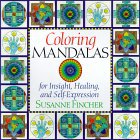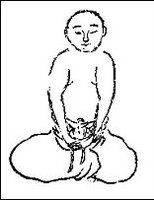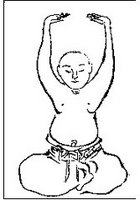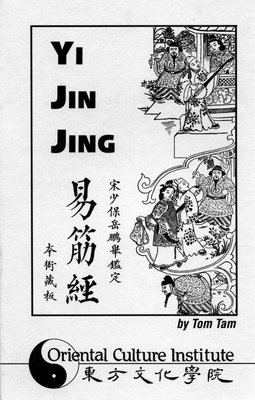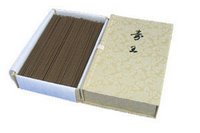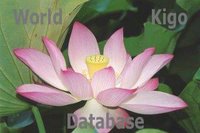quote from
The "Pure Heart, Simple Mind" Newsletter
Written by Charlie Badenhop, Originator of Seishindo
© Charlie Badenhop / Volume 6, No. 18; November 15, 2008
Your "body language" determines your thoughts and emotions
Body language
In Seishindo we consider "body language" to be the entire process involved in A. Breathing, B. Body usage (posture, movement, and overall muscle tone), and C. Neurotransmitter activity. (Neurotransmitters are chemicals that relay, amplify and modulate signals between neurons and the cells of the body. Adrenaline, cortisol, serotonin, etc.). This definition of "body language" is much broader than what most people use, and thus it's important to note. In Seishindo the terms "body language" and "somatic language" are interchangeable.
It's your body language at any given moment, that determines your emotional response to events and circumstances, and your current thinking. Tighten your shoulder and neck muscles, and breathe in a rapid shallow manner, and soon you'll be talking about how you've been feeling tense lately. Breathe deeply while relaxing the muscles of your face, neck, shoulders, and chest, and you'll likely report feeling calm.
When you change the way you breathe, use your body, and release neurotransmitters, you change your emotions, thoughts, and overall health condition. How to bring about such changes is a major part of what we teach in Seishindo.
Emotional response
Your emotional response to circumstances is a major factor determining the meaning of your experience, your beliefs about what transpired, and your perception of self and others. If you make a mistake when calculating some numbers and get upset at yourself, then you'll likely see your mistake as a sign that you're not good at math, or that you are careless. If you make the same mistake without getting upset, then you will simply correct the calculation and not develop a negative belief about yourself.
Emotional triggers
In most instances, your emotional response to circumstances is triggered prior to thinking about or assigning meaning to what's taken place. The speed of your emotional response is significantly faster and more primal than your ability to "understand" or describe what has transpired. Consider how quickly you pull your hand away from a hot stove. Your emotional response is often this quick. It's part of your survival instinct.
Verbal descriptions of events and circumstances are literally an "afterthought". The verbal language used to describe your experience (For instance, "I'm upset!") is generated as a response to your body language. In order to report feeling upset you will first have to release certain neurotransmitters and restrict your breathing some.
Emotional habits
If it's been your tendency to get upset by certain circumstances over and over again, then you'll likely get upset by these same circumstances in the future. In this regard, our emotional responses are similar to various other habits we have, like clearing our throat prior to speaking in public, or looking down when feeling embarrassed. Every time you duplicate an emotional response, you are that much more likely to once again have that response in the future.
The good news here is that indeed your system IS learning. So the more often you interrupt an old habit and replace it with a new way of responding, the more likely you will be to respond in this "new" way in the future.
Which of your brains mediate your emotions?
The activity of your enteric nervous system, reptilian brain, limbic brain, and heart, are for the most part responsible for your emotional response to circumstances. Over time, and with practice, you can mediate these responses and become more emotionally balanced.
There's no two ways about it, your neo-cortex is not in charge of mediating your emotions. Your neo-cortex is in charge of talking about your emotions though.
Two 80-20 rules
It's widely considered that approximately 80% of the emotional message conveyed in verbal communication is a result of verbal speed, tone of voice, intonation, emphasis, volume, and phrasing. In other words, as important as it is to choose the proper words to describe what you're thinking, words in and of themselves, are not enough to convey what you're feeling. High quality communication is all about conveying one's feelings in a balanced manner, and thus it's crucial that you become ever more aware of the 80% of communication that's beyond the words.
Another 80-20 rule is that at least 80% of your emotional understanding/response to circumstances occurs prior to your neo-cortex entering into the process of "understanding" what's going on. Emotion is not dependent on rational logic.
The recursive loop of language and body
Change the way in which you describe your circumstances (Verbal speed, rhythm, tone, volume, pausing, and breathing patterns.) and you will affect and change the meaning you assign to circumstances, your perception, and thus your emotional response.
Your body does not comprehend the words you speak, but your body does indeed comprehend the emotional tone that you deliver your words with. The more you speak in a slow pleasing rhythm, while breathing freely and easily in between phrases, the better able your body is to calmly digest your conversation. All of which will lead to a more solution oriented outlook on life.
As you change your emotional response to circumstances, you affect and change the overall condition and health of your body, which in turn will affect and change the language you use to describe your experience. In order to truly make a difference in your emotional state, solution oriented language patterns must be accompanied by a relaxed, physically balanced body.
Emotion consists of a recursive interaction of language and body. Emotion is a system that is coherent at a deeper level than language or body taken separately. When your emotional state truly changes there will be a concurrent recursive change in your body, and your use of verbal language.
The bio-chemistry of emotion
The various neurotransmitters you release into your body play a major role in determining your overall sense of health and well-being. The bio-chemical processes that make up your emotional response cannot be mediated by your rational mind. No matter how many times you tell yourself to "calm down" you won't get the results you desire unless you stop releasing adrenaline and or cortisol into your system.
If large quantities of cortisol and adrenaline are dispersed throughout the body, you'll report being overly excited or anxious. If your body does not generate and release sufficient amounts of serotonin, you will likely report feeling depressed.* The bio-chemical activity of your body is integral in determining your emotional response to events, and yet the average person is unable to mediate this activity without significant training.
*Approximately 85% of the systems serotonin is produced in the gut (the enteric nervous system) and this activity is not controlled by the brain in your skull! For more info on this see "The Second Brain" by Dr. Michael Gershon.
Using what "you" can change, to change what "you" can't
By learning how to change the systematic and habitual way you use your body and breathe, you'll little by little begin to change the systematic and habitual release of neurotransmitters. Changing the way you use your body leads to a change in your bio-chemistry, which further leads to a change in your emotional state.
In Seishindo we focus on changing the variables of body language we are clearly capable of changing (body usage and breath). In the long run this enables you to mediate the changes in bio-chemistry that are normally beyond your conscious control.
The importance of breath
Your breath plays a crucial role in enabling the body to distill life affirming meaning from your experience. In order for you to learn, adapt, and change in a generative manner, your body needs enough oxygen to facilitate proper digestion of your emotional responses.
Copious amounts of oxygen nurture and support your ability to rest, relax, and heal. Insufficient oxygen leads to excessive levels of carbon dioxide in the body, which leads to the body being overly acidic and thus toxic. A toxic body leads to a fight or flight response.
Two minds, two outlooks on life
We can say that each person embodies two different yet complementary minds. The rational mind (reasoning) and the emotional mind (feelings). Reasoning and emotion are two separate yet potentially complementary ways of understanding one's experience.
Your rational mind talks to you in the native language of your birth, and your emotional mind, talks to you via your body language. The key to living a healthy emotionally fulfilling life involves learning how to respond to life in a way that satisfies the desires of both minds.
Your emotional mind is eminently powerful, and it rarely loses an argument with the rational mind. When your rational mind and your emotional mind are working at cross purposes, it's usually the emotional mind that winds up dominating, and the result is that "you" seem unable to achieve what "you" desire. When your two minds are working in harmony life is just as you would like it to be.
You'll do well to ask "How" instead of "Why"
Most of us have spent a good deal of time asking ourselves or our coaches or therapists "Why is it that I keep on doing this?!" You might wind up deciding that you act the way you do because of the way your parents treated you, or because you grew up as the youngest child in your family. While there might be some truth in such thinking, it's rare that understanding "why" will lead to different emotional responses in the future.
The suggestion we make in Seishindo is that you spend time exploring how it is you generate your emotions. How what you do with your body leads you to feel a certain way. The more adept you become at realizing and responding to what your body is saying, the better able you'll become at managing your emotional responses in the future. Soon you'll wind up discovering that you are indeed capable of changing the way you think and feel.
Simple, yet not easy
It's as simple as that, yet not necessarily easy! I don't say this to discourage you. Indeed, I say this so that you won't become discouraged when you don't get immediate long lasting results. Living a happy healthy life is an artful activity that requires life long learning. Whatever you learn today, you can little by little improve upon tomorrow. Focus on the change you do get, and explore how to further improve over the course of time.
Written by Charlie Badenhop, the originator of Seishindo
:::::::::::::::::::::::::::::::::::::::::::::::::::::::::::::::::::::::::::::::::::::::::::::::::::::
だるま資料館
Daruma Museum, Japan
:::::::::::::::::::::::::::::::::::::::::::::::::::::::::::::::::::::::::::::::::::::::::::::::::::::





